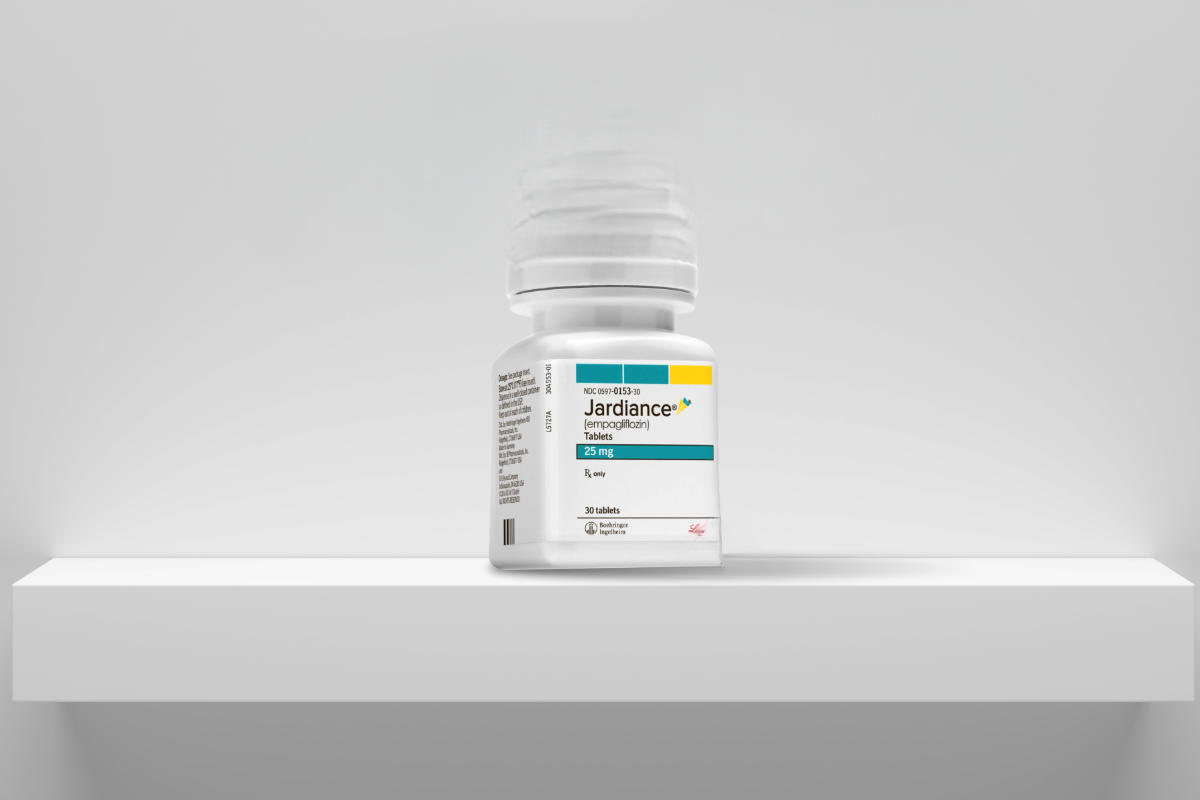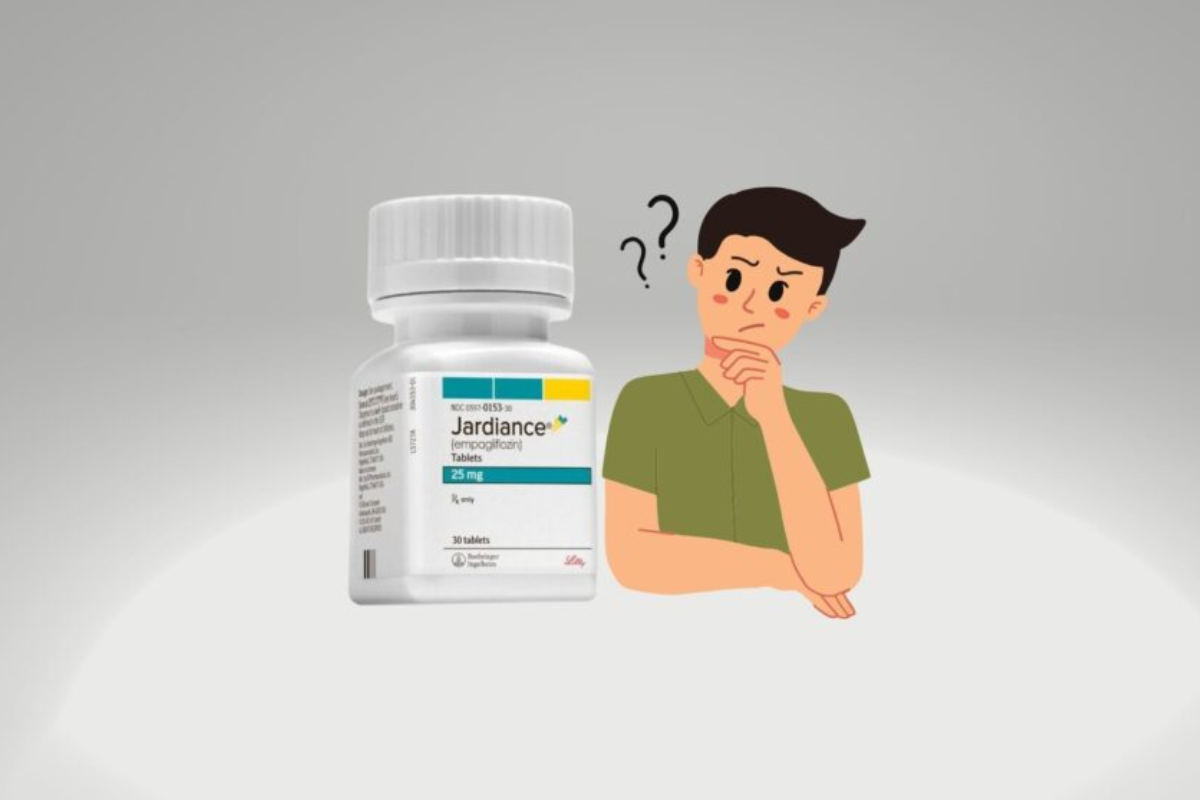Type 2 diabetes is a metabolic disorder that is characterized by insulin resistance and the relative deficiency of insulin which gives rise to hyperglycemia. Over the past few years, the outlook in treating the disease has changed from focussing on achieving glycaemic targets to comprehending other factors contributing to the disease, such as obesity. Pharmaceutically endorsed anti-diabetic agents aiding weight loss in Type 2 diabetes management, such as SGLT 2 inhibitors, have taken a very important place in diabetes management. This article provides insight into the effects of Jardiance on body weight in subjects with type 2 diabetes mellitus, focusing on how blood levels of the drug can induce weight loss, including its pharmacology, studies, and relevant biological and physiological factors. In conducting this review based on the accumulated evidence and research, we aim to clarify the effects of Jardiance on weight control in diabetic patients.
How Does Jardiance Cause Weight Loss?
Weight Change after Jardiance Administration: What is Its Impact on Weight?
In patients suffering from Type 2 diabetes, Jardiance has been discovered to induce a moderate yet noteworthy loss of body weight. Most of the weight loss seen with Jardiance can be explained solely on its mechanism, which is the inhibition of SGLT2 in the proximal renal tubules. This mechanism of action causes a urinary glucose loss which in turn creates a negative calorie balance. Clinical trials also report that the average weight loss with Jardiance treatment ranged from 2 to 4kg during 24 to 52 weeks. More importantly, such weight loss is usually coupled with the advancement of body composition about fat loss and reduced waist circumference, which indicate a positive change in metabolic health. Last but not least, Jardiance might also induce weight loss through appetite suppression, which complements the treatment of obesity and the management of Type 2 diabetes.
Will You Shed Some Pounds with the Assistance of Jardiance?
Some patients suffering from Type 2 diabetes may use Jardiance for weight reduction. It works mainly through the blockade of sodium-glucose co-transporter 2 (SGLT2), which also contributes to loss of calorie consumption due to increased weight of caloric loss through the mechanism of urination with various sugar components. Clinical studies have shown that a patient under Jardiance is capable of losing between 2 to 4 kgs within a time frame of 24 to 52 weeks. In addition this medication helps control the body weight and improves the body composition by decreasing the abdominal fat stores and waist circumference. It can then be inferred that Jardiance has a dual-purpose therapeutic effect, allowing diabetic patients to lose weight while effectively controlling blood glucose levels.
How Jardiance Works Mechanism Of Action
Jardiance inhibits the sodium-glucose co-transporter 2’s (SGLT2), which enhances glucose reabsorption from the renal tubules into the bloodstream. That is, the transporter’s inhibition helps increase the amount of glucose excreted out of the body through urine, thus reducing blood glucose levels. This mechanism contributes to the reduction of blood glucose levels but also aids in the relief of these patients since weight loss is encouraged due to the calorific deficit that results from disregarding glucose. In addition, Jardiance has other benefits, such as reducing the chances of having cardiovascular events among type 2 diabetes Mellitus patients, making it a more effective treatment.
Can You Take Jardiance with Other Diabetes Medication?

Co Adistrictіon of Jardiance and Metformin
It is common to prescribe the use of Jardiance in combination with Metformin for the management of Type 2 diabetes. Clinical studies have demonstrated that this combination is safe and effective as both act through complementary mechanisms: Metformin decreases hepatic glucose production and increases insulin sensitivity, while Jardiance helps to eliminate glucose. This cascade of events contributes to controlling blood sugar levels and helps in weight loss, lowering the chances of diabetic complications. Such patients on this combination therapy are however closely observed for any developing compliances or side effects as this treatment was reported to have lots of possibilities of causing dehydration and urinary tract infections when SGLT2 inhibitors were used alongside other diabetes medications. The complementary usage of Jardiance and Metformin is found to be significant in treating diabetes and its associated complications.
Combining Jardiance with Other Treatments
Jardiance (empagliflozin) will probably work better and prevent and lower the effects of diabetes and its complications when given with other diabetes treatments. Different combination dosages with Jardiance have been consistently demonstrated with solid data.
- Jardiance with Insulin: The combination of Jardiance with insulin therapy has been found to enhance overall glycaemic control and possibly lead to decreased insulin doses. This is very useful to persons on insulin therapy, whereby there are concerns about weight gain as a side effect. Clinical studies have indicated that using SGLT2 inhibitors like Jardiance in conjunction with basal insulin leads to the convergence of lower HbA1c levels without increasing the chances of hypoglycemia with proper monitoring.
- Jardiance and GLP-1 Receptor Agonists: There may be advantages in using Jardiance along with a GLP-1 agonist like liraglutide or semaglutide to control blood glucose concentration and reduce body weight. This combination works on several metabolic pathways; while GLP-1 agonists stimulate insulin release and decrease gastric emptying rate, Jardiance causes glucose to be removed from the body via urine. This is also substantiated by further reduction of HbA1c and cardiovascular morbidity in patients using this combination.
- Jardiance with DPP-4 Inhibitors: Jardiance may also be used with DPP-4 inhibitors (e.g., sitagliptin), although this is quite rare. However, this combination may result in relatively small additional improvement regarding control of glycemic levels from poor levels compared with other combinations. Clinical guidelines suggest that this is acceptable in terms of safety, however using this combination, practitioners should assess each patient’s treatment response and goals.
To sum up the above, the Jardiance is used together with medications for other groups with diabetes. Such strategies can increase the effectiveness of treatment for the patients. Nevertheless, practitioners must be on the lookout for side effects like dehydration, urinary tract infections, and hypoglycemia risk in these cases of polypharmacy. The patient must individually verify all combinations of the treatment complexes, considering the clinical parameters needed to cope adequately with Type 2 diabetes.
What Are the Possible Side Effects of Jardiance?

Common Side Effects of Jardiance
Jardiance (empagliflozin) is a safe drug, however, some patients can develop certain common adverse effects. Some of these are:
- Mycotic infections in the genital region: The rise in yeast infections, especially among females, is a major concern. Jardiance encourages the release of glucose into urine, making it a more favorable space for fungal growth.
- Urinary Tract Infection (UTI): A predisposition to urinary tract infections may be due to the high concentration of sugar in the urinary tract, which encourages the growth of microorganisms.
- Lack of fluids in the body: Jardiance is a diuretic drug that may stimulate urination, potentially leading to dehydration in particularly susceptible individuals without sufficient fluid intake.
- Low blood sugars: These are seizures that are brought about by starving the brain, most probably due to low blood sugars. When these problems manifest, Jardiance is generally not associated with low blood sugar levels when used on its own; however, this problem does tend to be exacerbated when the drug is employed in conjunction with other diabetes medications, particularly insulin or sulphonylureas.
Such patients should be observed for these side effects for a specific period and seek timely assistance from health providers if these symptoms become worrisome.
Serious Side Effects of Jardiance and Diagnosis of Each One
Even if Jardiance is usually contraindicated, some serious side effects require medical disclosure. These include:
- Ketoacidosis: A common side effect of SGLT2 inhibitors and certain drugs, ketoacidosis occurs rarely. It occurs when some chemicals known as ketones become elevated in the bloodstream, causing nausea, vomiting, stomach ache, fatigue, and breathing difficulty. Patients must be warned to look out for such signs, and they need care urgently if they do.
- Acute Kidney Injury: These are sudden, obvious kidney function changes, especially among those with chronic kidney disease or those at risk due to dehydration. Such renal function tests, especially serum creatinine and eGFR, need to be done regularly for patients about to commence treatment with Jardiance to allow timely recognition of any deterioration in renal well-being.
- Severe allergic reactions: Some symptoms can be very serious and require immediate medical attention, like Anaphylactic shock or edema. In anaphylaxis or angioedema, patients experience difficulty swallowing or breathing due to swelling of the face, lips, tongue, pharynx, or throat. Thus, patients must be educated, and any sign of allergic reaction must be reported.
These serious side effects must be recognized and managed timely and effectively to ensure that patients on Jardiance remain safe and healthy.
Alleviation of Side Effects of Jardiance
To prevent and treat the side effects of ARDs, it is relevant to follow a multidimensional strategy comprising patients’ education, control, and stage intervention.
- Patient Education: It is also essential to explain to the patients the possible adverse effects of Jardiance, such as ketoacidosis, acute kidney injury, and allergy. Help in outlining the early signs is quite important. Patients should be well hydrated and counseled on the risk factors for kidney injury.
- Regular Monitoring: A scope of clinical practitioners will have to readily complete the monitoring of the changes in renal function through creatinine and eGFR determination, especially when commencing the use or change in dose of the medication. There should be follow-ups of the patients with instructions to watch for symptoms of ketoacidosis or monitoring for improvement in fatigue, nausea, and difficulty in breathing.
- Proactive Intervention: Because odors for serious adverse events can occur, accurate and expeditious evaluation and management become critical. For example, stopping the status/post feed of Jardiance and treating adverse events such as acute kidney injury and/or anaphylaxis. In some situations, when the severity becomes too great, professionals such as nephrologists and/or allergists will be needed to fix the problem.
These recommendations help improve patients’ safety, achieve the desired therapeutic results, and prevent complications associated with the use of Jardiance.
How Effective is Jardiance for Weight Loss in People with Type 2 Diabetes?

Average Weight Loss with Jardiance
Research on Jardiance (empagliflozin) has shown weight reduction in individuals suffering from Type 2 diabetes, and some studies focus upon its ability to help with weight management as well. Such patients, on average, have shown considerable weight loss in the range of 3 to 5 kg (approx 6.6 to 11 lbs) during the 24-week study, supplemented by modifying the diet and engaging in physical activity. Being an SGLT2 antagonist, it promotes the mechanism of glucosuria, that is, forcing the excretion of excess glucose through urine, which, therefore, brings about a negative energy balance that leads to weight loss. Therefore, weight effects may even be more significant with Jardiance, given its diuretic properties which may cause further weight loss through loss of fluid. However, these outcomes can vary from one person to the other, such that individual clinical results may be affected by initial body weight, adherence to prescribed lifestyle changes and metabolic status, etc.
The reasons why Jardiance is not approved for weight loss
Jardiance (empagliflozin) has received ot approval as a weight loss medication, notwithstanding the reported weight loss benefits in datasets. In particular, Jardiance is intended for the treatment of Type 2 diabetes instead of being an anti-obesity drug. The drug approval protocols by the FDA or any regulatory body require a medication to be tried and confirmed for effective weight loss, especially by conducting hard, long-term studies on such Health benefits. Also, regarding weight loss with ”Jardiance”, it is achieved more of an auxiliary effect in the way that the primary aim of the drug is to control blood sugar levels and keep diabetes patients from risk of heart diseases. It raises the probability of developing side effects like dehydration and electrolyte disturbance upon or after its usage making weight control as primary intent unreasonable. Hence, in effect, weight loss is possible with Jardiance, but it should never be used as the mainstay of treatment of obesity until appropriate evidence on its safety and efficacy in such an indication is established.
Evidence from an Actual Setting: Adult Patients with Type 2 Diabetes
In practice, there have been consistent reports of improved glycemic control in Type 2 diabetes adult patients prescribed with Jardiance (empagliflozin) resulting in impressive reductions in HbA1c levels. Reports from clinical trials suggest that weight loss in patients could be between 2-3 kg over several months; however, such results are variable. There have been in addition better cardiovascular outcomes like reduced risk of hospitalization for heart failure which suggests that the drug has worked on more than just the management of blood sugars. Other than that, a normalization of fluid balance and other adverse effects, notably urinary tract infections and the problems above associated with diuretic effects, must be monitored regularly to protect the patients and enhance the treatment outcome. To conclude, based on the evidence collected regarding the use of Jardiance among adult type 2 diabetes patients in the real world, the drug in isolation cannot be viewed as the main performer. Rather, it needs to be supported by sustainable lifestyle changes and periodic medical intervention.
What Should You Consider Before You Take Jardiance for Weight Loss?

Are You Cautious Towards the Medication Jardiance?
Evaluating safety for videos of keypopcomcom nova empagliflozin safety considerations helps determine invasive measures to treat each disease segment, which includes the health status and capability. Jardiance, however, is not recommended for patients who have severe renal impairment ( e lower than thirty mL.min eGFR -D) because of the negative effects. Patients should be assessed for urinary tract infections before the commencement of treatment because such infections are documented side effects and may also affect treatment. Also, such patients having a past history of ketoacidosis or hypotension must speak to the doctor before initiating the treatment with meat-containing Jardiance. Regular visits, physical examinations, and laboratory tests such as renal function tests and searches for infection are necessary to be able to manage these side effects and side effects of the drug well. Patients should be able to mitigate some of the adverse effects with the help of the measures above in the management of Jardiance to offer an effective and safe tolerance of type 2 diabetes and its diseases.
Assessing the Likelihood of Cardiovascular Mortality Risk
It is important to always understand in relative clarification the pros and cons that relate to the use of Jardiance (empagliflozin), especially bearing in mind the cardiovascular risks and the benefits it is meant to ameliorate. According to the EMPA REG OUTCOME, an empagliflozin reduces the chances of cardiovascular mortality in individuals with type 2 diabetes and cardiovascular disease. Nevertheless, the fact still exists that while the benefits of treatment may be more than the dangers for a lot of people, there still exists some level of risk – especially for those individuals with some cardiovascular diseases or other co-morbid diseases that may increase the risk of mortality in general.
It is crucial to determine this in advance about the cardiovascular history of the patient, other treatments, and general practice health conditions for the prescription of Jardiance. Management plan should include systematic assessment of cardiovascular risks and modification of lifestyle habits to ensure better health outcomes. Adverse events should also be followed up in addition to patient’s explanation about the adherence to the treatment and changes in the lifestyle that lowers the risk of cardiovascular mortality in this patient group.
Other Factors to Consider
Apart from the cardiovascular history and any comorbidity, some other factors must also be analyzed in the case of Jardiance (empagliflozin) therapy for Type 2 diabetic patients. First, evaluation of renal function is important because empagliflozin is contraindicated in patients with moderate to severe renal impairment; renal impairment would only increase the risk of adverse events. Second, vulnerability to multiple drug exposures warrants assessment, especially in patients already receiving concurrent medication, as it can impair efficacy and safety.
These parameters are also valid with respect to the treatment of diabetes for cardiovascular risk, but these include weight loss, physical activity, and smoking habits and thus warrant proper attention in treatment programs. Even psychological factors such as motivation and adherence of patients to prescribed therapy can determine the effectiveness of the treatment approach. Finally, it is necessary to consider such demographic determinants as the inability to pay for drugs or lack of medicines, which would be necessary to effectively control diabetes and its cardiovascular complications.
Frequently Asked Questions (FAQs)
Q: What exactly is Jardiance and how does it promote weight loss?
A: Jardiance is an oral drug mainly used to manage type 2 diabetes. It accomplishes this by assisting the nephron to expel excess sugar from the blood into urine. Although not approved for this indication, Jardiance can aids in weight reduction as a bonus.
Q: How should Jardiance be used to achieve the desired results?
A: With food or without it, Jardiance is usually taken at least once daily. When how you should take the medication is a specific event, you have to do that as prescribed by your doctor. If you forget to take a medication dose, do it when you remember. Do not take two doses at once because you want to make up for the dose you missed previously.
Q: For what reasons is the Jardiance prescribed to its patients?
A: 10mg is the usual starting dose of Jardiance in Adults, taken as one tablet once daily. If the doctor seizes it for clinical follow-up, the dose may be escalated to 25mg according to the response to the drug and its underlying side effects. Nonetheless, there is no direct correlation between use of Jardiance and weight loss; hence, prescriptions should always be obtained from the doctor.
Q: Does therapy with Jardiance, the sodium-glucose co-transporter 2 (SGLT2), lead to significant weight reduction?
A: Jardiance is not recommended for use alone to induce or achieve weight reduction. This drug is specifically meant for the treatment of type 2 diabetes and should be combined with an adequate diet and exercise. Always consult with your healthcare provider for more information.
Q: What are the significant adverse reactions of Jardiance?
A: Additional common side effects of Jardiance are urinary tract infection, or UTI, frequent urination, and yeast infections. Some side effects may be severe, including dehydration, hypotension, or kidney impairment. If you have encountered any severe side effects, you should promptly report it to your physician.
Q: Compared with the other medications, is the degree of weight loss more in these patients taking Jardiance?
A: Some studies show that those enrolled in the JARDIANCE registry will lose more weight than those taking other anti-diabetic medicines. Nevertheless, weight loss may be influenced by other factors, such as diet and physical activities.
Q: Is Jardiance appropriate for everyone who wishes to lose weight?
A: No, Jardiance is not for everyone. It is indicated for a certain group of people, especially for those with type 2 diabetes. Patients suffering from Type 1 diabetes or have severe kidney diseases will beware contraindicated from using Jardiance. Your health care specialist is the best person to advise you on whether it is safe to take Jardiance.
Q: What should I do if I have an allergy caused by Jardiance?
A: If you experience an allergy to Jardiance, such as a rash, itching, or trouble breathing, go back to your hospital as soon as possible. Before jarring any gels or taking Jardiance, you should bring any other allergy to the attention of your doctor.
Q: How soon should I expect weight loss outcomes with Jardiance?
A: It all depends on the individual when the outcomes can be viewed. Others take only a few weeks before they start seeing the changes, while, for some, it may take months before they lose weight. A perfect healthy diet along with regular physical activity must also be present for maintaining the best results while taking Jardiance.
Q: Are there any lifestyle adjustments which I should adopt due to taking Jardiance?
A: It is highly recommended that people taking Jardiance eat healthy and exercise. These changes have, in the past, helped improve the efficacy of the drug in controlling type 2 diabetes and may provide further advantages in weight loss.